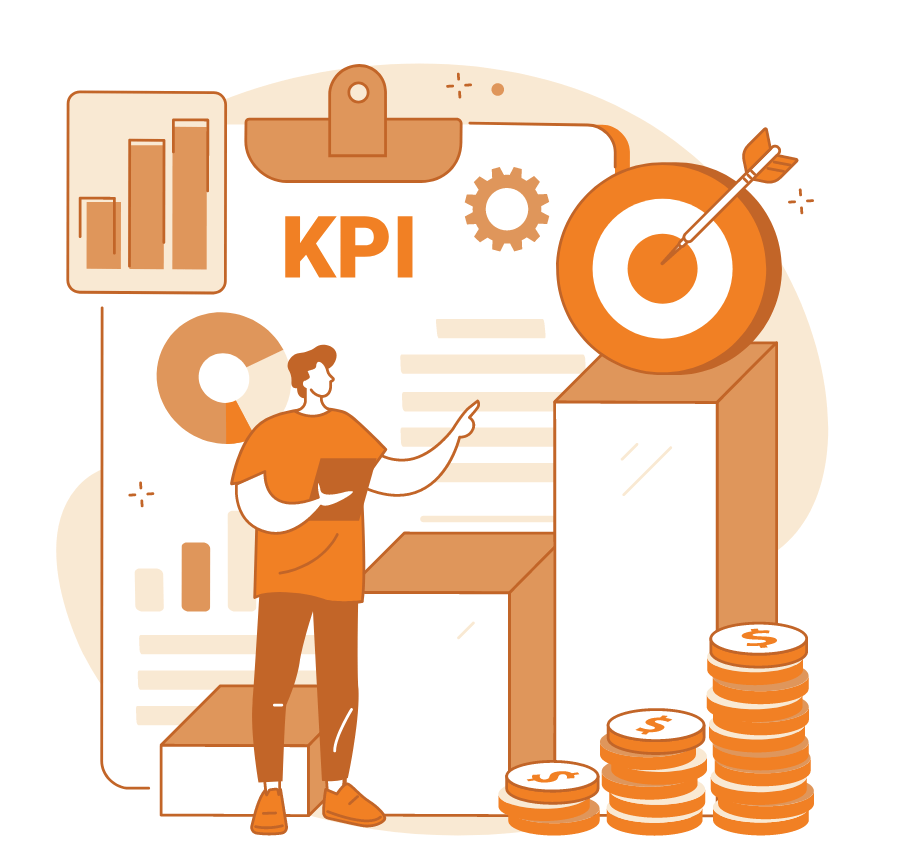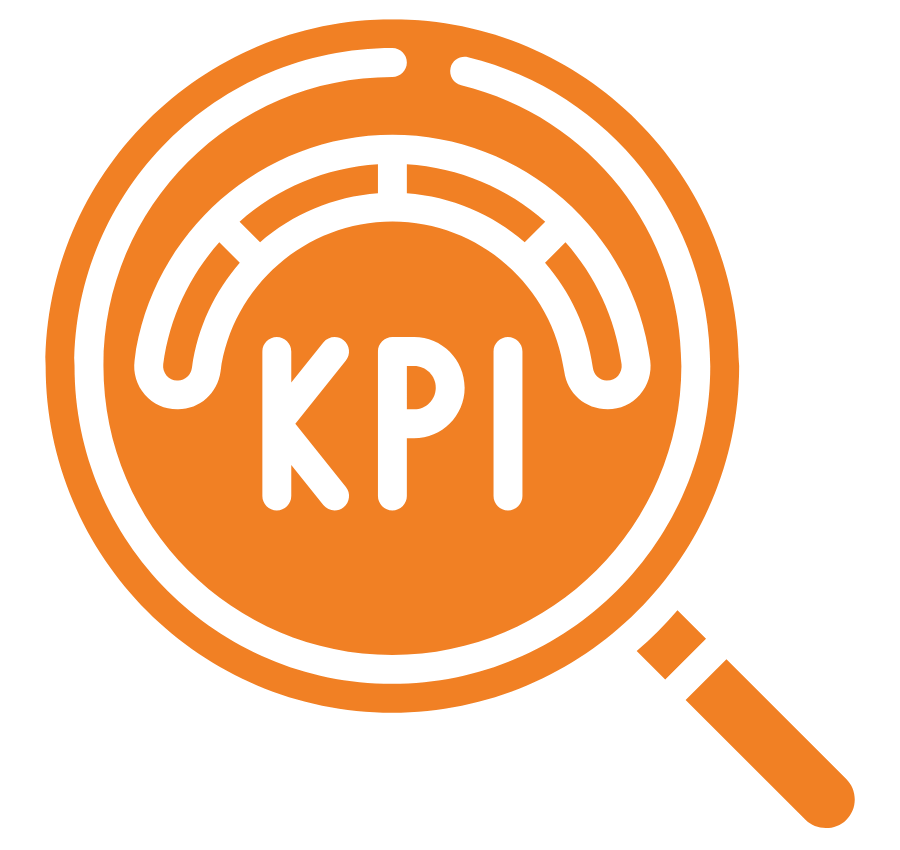
The hiring process is an essential part of any successful business. It is a
significant step in bringing in new talent and increasing the company's
interaction with potential employees.
Improving the hiring process is vital for a company to ensure that HR managers bring in the best possible candidates. That is why significant attention must be given to recruiting KPIs that positively influence the process.
What Are Recruiting KPIs?
Recruiting KPIs are metrics used to measure the success of a company's recruitment process. They provide an objective way for companies to take care of recruitment analytics and track their progress in finding and hiring the best candidates (with high employee performance levels) for vacant positions.
In addition, recruiters' KPIs can help identify areas where improvements are needed to optimize recruiting efforts, meet the recruiting budget, and ensure that qualified applicants are hired quickly and efficiently.
Overall, understanding your company's top recruiting KPIs will help you make sure you're making smart decisions about hiring processes and avoid adverse impacts on the whole procedure. Hiring managers do their best to determine how many candidates can become valuable team members over time.
The tracking of these recruiting metrics regularly (same as recruitment dashboards building) helps business owners reach improvement in effective talent acquisition while avoiding unnecessary hire costs along the way.

Top KPIs to Measure During Your Recruitment Process
Recruiting team does its best to perform quick and efficient talent acquisition, as any organization needs to succeed. Measuring key performance indicators (KPIs) during recruitment is crucial to ensure you bring in qualified candidates.
Here are 15 important talent acquisition KPIs that should be monitored throughout recruitment:
-
Time to hire.
Tracking this metric allows recruiters to identify bottlenecks in their hiring processes and opportunities for streamlining procedures, such as screening high-quality candidates more quickly or improving communication between departments involved with the hiring decision-making process (without any adverse impacts). -
Cost per hire.
This KPI tracks all the recruitment costs associated with finding and onboarding new hires, including advertising fees, recruiter salaries, background checks, etc. Monitoring cost per hire helps recruiters determine whether they're getting value out of their investments in recruiting efforts. It also allows them to compare different methods used during the recruitment process against one another based on recruitment efficiency metrics (like cost per hire ratio versus time-to-fill rate or applicant success rates of hires made through each method used). -
Hire quality.
It's used to gauge the performance of new hires in their role. It is typically measured by their productivity, job satisfaction, and retention rate. Quality of hire can be improved by ensuring due to the structured, objective, and focused on finding the right candidate for the job recruitment process.
-
Application abandonment rate.
It's used to measure the effectiveness of your job application forms. It helps to determine the percentage of candidates abandoning the application process. A high abandonment rate indicates that job seekers may need help completing the form or need help finding it engaging enough to complete the application process. The hiring manager should look for ways to make the entire hiring process more accessible and engaging for applicants to reduce the abandonment rate. That could include simplifying the form, making it mobile-friendly, adding interactive elements, and providing clear instructions.
-
Source quality of hire.
That typically measures by tracking the sourcing channel efficiency of the candidate's first contact with the company (e.g., job boards, recruiting portals, job ads, referrals, recruitment agencies, etc.). Knowing the source quality of hire can help you identify the most effective recruitment ways and focus on them. Consider the sourcing channel efficiency, as this moment positively influences the entire recruiting process. -
Offer acceptance rate.
It's the percentage of job offers that a company has accepted. This solution helps measure the success of a company's recruitment efforts and to track the overall job market. Companies can increase their offer acceptance rate by offering competitive salaries and benefits and ensuring their job advertisements are attractive. Offer acceptance rate is an essential part of recruiting KPIs, so remember it. -
Candidate experience.
The quality of hire experience offered by an employer's brand will directly impact its ability to start talent acquisition. That makes measuring candidate experience critical when evaluating overall effectiveness within hiring managers' efforts. Surveying qualified candidates after they've gone through various stages in your hiring process provides valuable insights into the crucial moments that will help reach candidate satisfaction while interacting with your company throughout every step along their journey through the recruitment funnel. Make sure that the candidate experience meets your needs. -
Rejection rate.
It's about the percentage of qualified candidates who were rejected. -
Interview to hire ratio.
It concerns the number of interviews required to fill a role.
-
Average response time.
It refers to the time taken to respond to the best candidates. -
Applicant volume.
We are talking about the total number of qualified candidates for a role. -
Diversity rate.
It is the percentage of diverse candidates in the applicant pool. -
Referral rate.
It concerns the percentage of qualified candidates referred by existing employees. -
Retention rate.
Such hiring metrics demonstrate the percentage of new hires that remain with the company. -
Job satisfaction.
It helps to determine the overall employee or candidate satisfaction in their roles and how many applicants have positive impressions.
Pay specific attention to the candidate's net promoter score (CNPS). It's a metric that measures how job candidates experience the recruitment pipeline. The metric is based on the net promoter score concept, which measures customer satisfaction.
The CNPS scale ranges from -100 to +100, and we determine it by asking job candidates to rate on a scale of 1 to 10 how likely they are to recommend a company to people they know. Hiring managers can find out the way job candidates perceive their recruitment process. Then, they can use this information to improve and provide a better candidate experience.
Overall, monitoring these three key performance indicators help organizations better understand the recruitment efficiency of their current strategies for talent acquisition who fit within the company culture.
How to Choose Your Recruitment KPIs in Your Organization

Choosing the right KPIs for your organization is essential to ensure that you can measure and track your progress toward achieving successful recruitment outcomes. It would help if you tailored your recruitment KPIs to meet the organization's specific needs and align with overall business objectives.
In addition, the hiring process and hire quality must improve, thus creating the condition for 100% hiring manager satisfaction.
The first step in selecting a set of appropriate recruiting KPIs is understanding the type of data that has to be measured and tracked throughout the full-recruiting process.
It's also important to decide which leverage data are most relevant based on organizational goals. Thus, they can become part of an effective applicant tracking system designed specifically around those objectives or initiatives pursued within the company's recruiting strategy framework.
Organizations must create a plan for tracking them over time once all necessary data points are determined. Such a solution will help find the best candidates via the proper recruitment channels, reach the high quality of hire, and identify trends or changes in performance levels that may need further investigation into potential issues within the hiring process.
Companies will better understand strategies that work best when attempting to perform a talent acquisition while minimizing recruiting costs associated with doing so through careful selection criteria implementation during each hiring stage along its journey towards making successful hires happen more often without any adverse impacts!
New Ways to Improve Recruitment Efficiency

Organizations should focus on creating an attractive employment brand, clear, concise job postings, and using modern digital tools for recruitment and hiring to increase recruitment funnel effectiveness.
Employers should also strive for a diverse and inclusive workplace, use targeted recruiting strategies, provide competitive compensation and benefits, and regularly review their recruitment process to eliminate the possible adverse impact of various factors. In addition, it's better to ensure their recruitment process complies with all applicable laws and regulations.
Finally, recruiters should network and use social media to promote their open positions and improve recruitment reach.
Conclusion
Lastly, recruiting KPIs are a great way to measure the effectiveness of your recruiting process and ensure that you are making the best hiring strategic decisions that fit the company culture. You can gain valuable information about your recruiting process and identify areas of improvement due to tracking key recruitment metrics.
It's also possible to use KPIs to measure the success of your recruitment strategy, ensure that you are meeting your recruiting goals, and ascertain that you are getting the best ROI for your recruitment efforts and hiring manager satisfaction.
By the way, those company owners looking for an innovative way to increase recruitment efficiency should pay attention to the Playhunt platform. This solution with video interviews positively influences the candidate and demonstrates an entirely new approach to the selection of employees.
Moreover, it makes it possible to create the most suitable conditions for people and use all the advantages of modern technologies.


